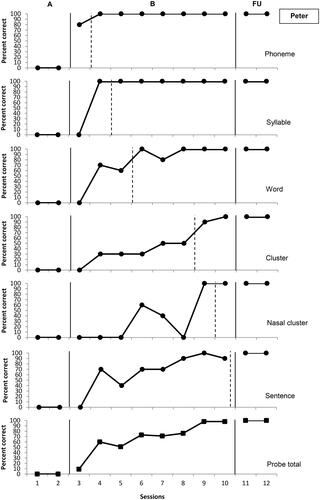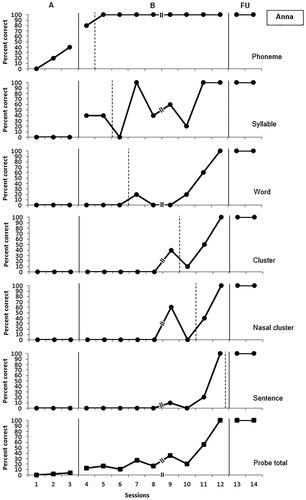Figures & data
Table I. Detailed description of the three participants in the final study group, including results from the initial assessment at the clinic.
Table II. Detailed description of the treatment steps, corresponding linguistic contexts, examples of materials and activities at each step as well as number of probe measure items and probe item examples per each linguistic context.
Figure 1. Percent correct (oral) /s/-production for Peter in the six linguistic contexts probed and in the corresponding probe total score across all study phases. A: baseline, B: treatment and FU: follow-up. Dotted lines indicate treatment start of a specific linguistic context.

Figure 2. Percent correct (oral) /s/-production for Tom in the six linguistic contexts probed and in the corresponding probe total score across all study phases. A: baseline, B: treatment and FU: follow-up. Dotted lines indicate treatment start of a specific linguistic context. Hatched lines indicate a three-week treatment break.

Figure 3. Percent correct (oral) /s/-production for Anna in the six linguistic contexts probed and in the corresponding probe total score across all study phases. A: baseline, B: treatment and FU: follow-up. Dotted lines indicate treatment start of a specific linguistic context. Hatched lines indicate a five-week treatment break.

Table III. Mean probe total score across study phases, mean difference in probe total score between study phases, total number of treatment sessions, total intervention duration as well as time from treatment end to FU1 and FU2 for the three participants.
